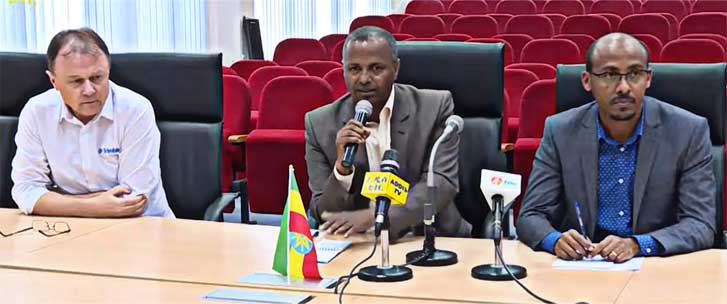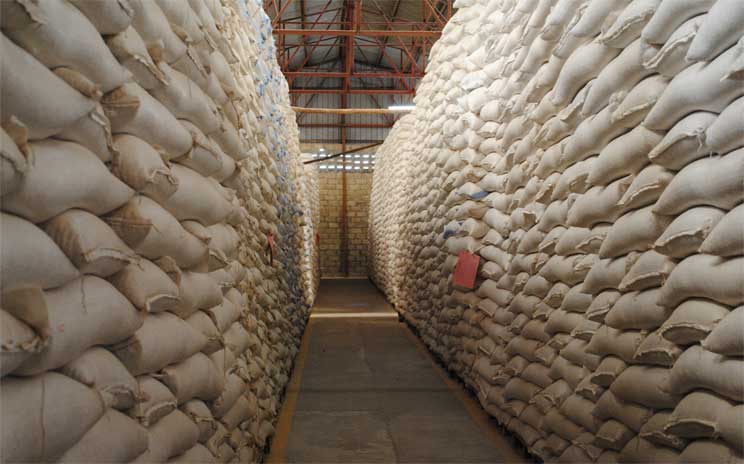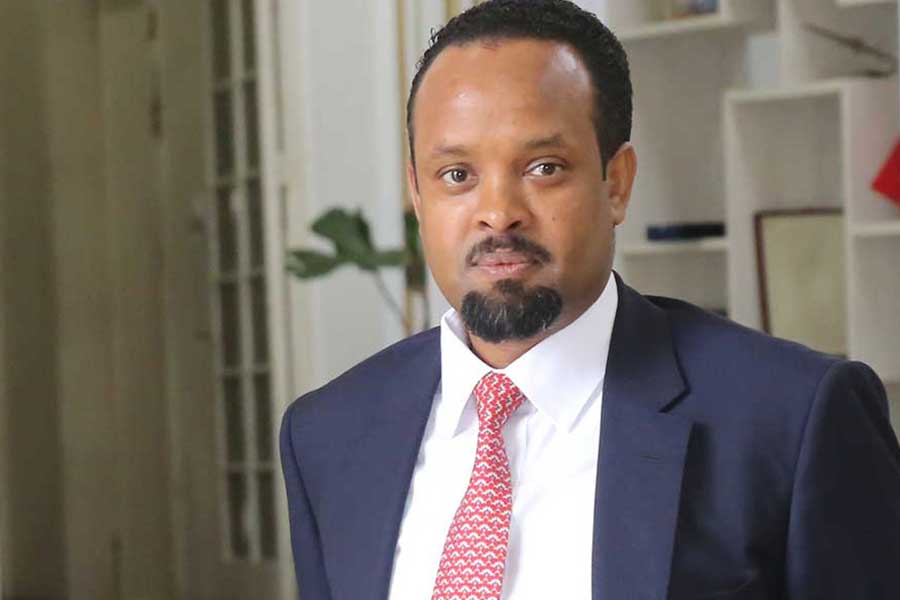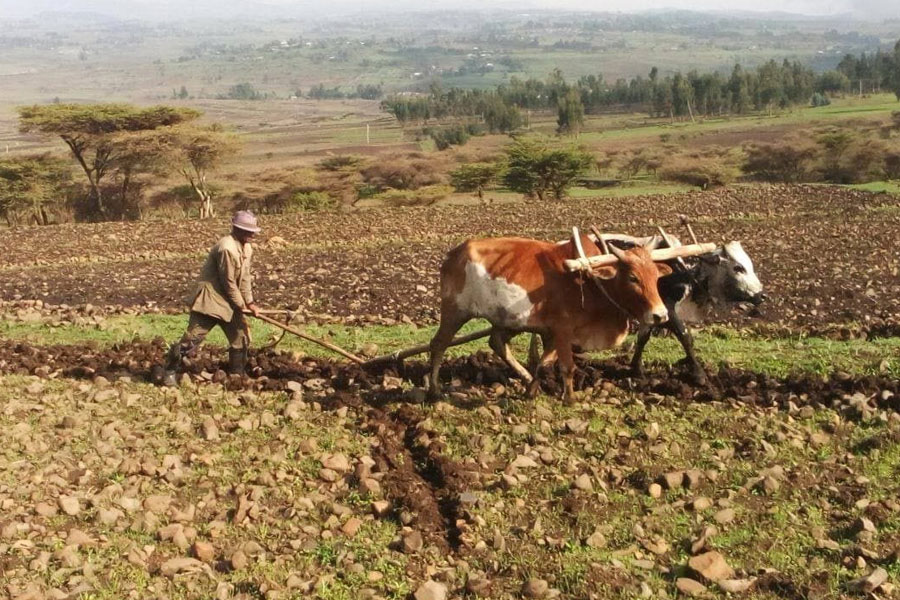
Radar | Jan 25,2020
Aug 3 , 2019
 The Ministry of Mines & Petroleum briefed the media and stakeholders about the mining cadastre system on August 1, 2019.
The Ministry of Mines & Petroleum briefed the media and stakeholders about the mining cadastre system on August 1, 2019. Starting in October, companies investing in the mining industry will register online to obtain and renew exploration and extraction licenses.
To facilitate the online registration system, the Ministry of Mines & Petroleum has launched a landfolio mining cadastre system that enables stakeholders in the mining sector to communicate and interface directly with the Ministry and the regional mining bureaus.
Canadian International Resources & Development Institute, an independent centre of expertise in natural resource development that opened an office in Ethiopia in 2016, covered the 40 million Br expense for the project.
A 12-member team composed of the Ministry and regional mining bureaus as well as Trimble, a South African company founded in 1978, have developed the system over the past seven months.
In customising the system, the team studied to Kenya and Zambia experiences, according to Fitsum Assefa, project officer at Supporting the Ministry of Mines Ethiopia, under the Institute.
The system is also designed to operate during power and internet outages, since the servers of the Ministry are connected the Ministry of Innovation & Technology's cloud.
It will replace the existing manual system of the Ministry, according to Assefa Kumsa, state minister for Mines & Petroleum, which issued 24 mining licenses in the just-ended fiscal year out of the requested 60, a record high. Nineteen licenses were for exploration, while the remaining five were for extraction. The companies will invest a total of 4.9 billion Br and create 1,200 jobs when they become fully operational.
"We've been receiving complaints from customers on our service," said Assefa.
Previously, the Ministry tried to develop an in-house system, FlexiCadastre, which was supplied by Trimble. But customers could not use it, since it was designed to be used by the staff of the Ministry only. The Ministry gave two rounds of training to its employees and representatives from the regional mining offices on how to use the old system.
"We'll also be giving them additional training," said Sisay Ayalew, director of mineral licensing and administration at the Ministry.
In the country, a total of 480 businesses secured licenses to engage in the mining sector, whose contribution to export revenue has been declining for the past several years. Six years ago, the export of mineral products generated 650 million dollars. However, it dropped to 49 million dollars in the just-ended fiscal year.
Currently, the mining sector provides livelihoods for 177,000 people who are engaged in artisanal mining and 2,000 people employed formally by mining companies.
To rescue the ever declining revenues from the sector, the Ministry formed a National Steering Committee two weeks ago. The 12-member committee is composed of represenatives from the Ethiopian Geological Survey; Mining, Oil & Biofuel Corporation; and the Ministry of Mines & Petroleum, tasked with assessing the problems of the sector and suggesting law and policy reforms in the industry.
Mulugeta Alene (PhD), an associate professor at Addis Abeba University’s School of Earth Science for more than two decades, believes that the landfolio mining cadastre system will bring clarity and avoid bureaucracy in the sector.
"Besides helping the country to get more foreign direct investment in the mining sector," said Mulugeta, "it will help the country to utilise its resources properly to increase income gained from mining."
PUBLISHED ON
Aug 03,2019 [ VOL
20 , NO
1005]

Radar | Jan 25,2020

Fortune News | Sep 21,2019

Fortune News | Aug 01,2020

Fortune News | May 13,2023

Radar | May 07,2022

Radar | Jul 01,2023

Fortune News | Dec 23,2023

Fortune News | Jun 15,2019

Fortune News | Jun 08,2024

Radar | Jun 19,2021

Dec 22 , 2024 . By TIZITA SHEWAFERAW
Charged with transforming colossal state-owned enterprises into modern and competitiv...

Aug 18 , 2024 . By AKSAH ITALO
Although predictable Yonas Zerihun's job in the ride-hailing service is not immune to...

Jul 28 , 2024 . By TIZITA SHEWAFERAW
Unhabitual, perhaps too many, Samuel Gebreyohannes, 38, used to occasionally enjoy a couple of beers at breakfast. However, he recently swit...

Jul 13 , 2024 . By AKSAH ITALO
Investors who rely on tractors, trucks, and field vehicles for commuting, transporting commodities, and f...

Oct 18 , 2025
The political establishment, notably the ruling party and its top brass, has become p...

Oct 11 , 2025
Ladislas Farago, a roving Associated Press (AP) correspondent, arrived in Ethiopia in...

Oct 4 , 2025
Eyob Tekalegn (PhD) had been in the Governor's chair for only weeks when, on Septembe...

Sep 27 , 2025
Four years into an experiment with “shock therapy” in education, the national moo...